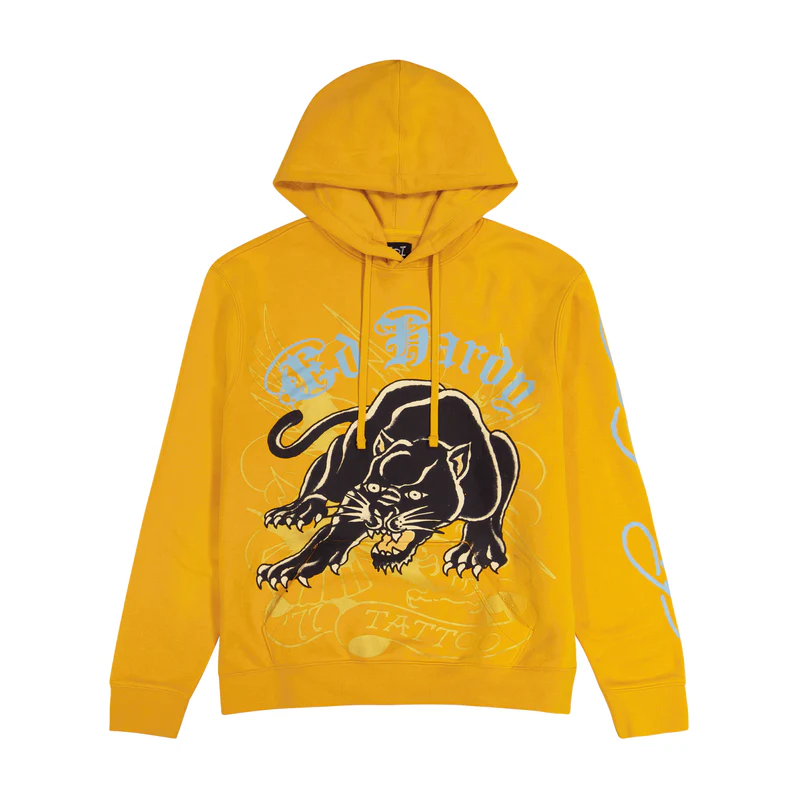Ed Hardy is a name synonymous with tattoos and fashion, marking a significant turning point in the fashion industry. His bold designs and artistic vision have reshaped the way tattoos are perceived and worn. This article explores how Ed Hardy’s tattoos redefined fashion couture, transforming a subculture into a mainstream phenomenon.
The Origins of Ed Hardy
Ed Hardy, born in 1945,ed hardy sweatsuit began his artistic journey as a tattoo artist in the vibrant streets of San Francisco. After studying traditional Japanese tattoo techniques, he developed a unique style that blended Eastern and Western influences. His passion for tattoo art led him to open his own tattoo parlor, where he gained recognition for his intricate designs. This fusion of art and culture laid the groundwork for what would eventually become a fashion empire.
The Birth of a Fashion Icon
In the late 1990s, Ed Hardy teamed up with designer Christian Audigier to launch a clothing line that showcased his iconic tattoo art. This collaboration marked a pivotal moment in fashion history, merging tattoo culture with high fashion. The Ed Hardy brand quickly gained popularity for its vibrant graphics, bold colors, and intricate imagery, all of which reflected Hardy’s unique artistic vision. This clothing line brought tattoos into the spotlight, elevating them from the underground to the forefront of fashion.
Tattoos as Wearable Art
One of the most significant contributions of ed hardy jeans to fashion couture is the concept of tattoos as wearable art. Before Hardy, tattoos were often associated with rebellion or subculture, but he successfully transformed this perception. By integrating his tattoo designs into clothing, he created a new narrative that celebrated individuality and self-expression. Each piece of clothing became a canvas for art, allowing wearers to showcase their personality and style.
A Shift in Cultural Perception
Ed Hardy’s designs played a crucial role in shifting societal perceptions of tattoos. Rather than viewing them as marks of rebellion, consumers began to see tattoos as a form of artistic expression. This change paved the way for a broader acceptance of body art in mainstream culture. Hardy’s work emphasized that tattoos are not just personal choices but also beautiful and intricate forms of art that deserve recognition and appreciation.
The Celebrity Endorsement Factor
The rise of Ed Hardy coincided with endorsements from high-profile celebrities, further solidifying its place in fashion couture. Stars like Madonna, Britney Spears, and Justin Bieber were often spotted wearing Ed Hardy designs, creating a buzz around the brand. These endorsements played a significant role in popularizing Ed Hardy and making tattoos a fashionable choice. As celebrities embraced the brand, it became synonymous with a glamorous lifestyle, appealing to a diverse audience.
Ed Hardy’s Influence on Streetwear
Ed Hardy’s impact extended beyond traditional fashion to influence streetwear culture. The brand’s bold graphics and vibrant colors resonated with urban fashion enthusiasts, establishing a new standard for casual clothing. Ed Hardy successfully bridged the gap between high fashion and street style, encouraging individuals to express themselves through their wardrobe. This movement also paved the way for other brands to explore tattoo-inspired designs, making body art a staple in streetwear collections.
The Global Reach of Ed Hardy
As the Ed Hardy brand grew, its reach extended beyond the United States. The designs gained international acclaim, appealing to fashion lovers worldwide. The brand became a global phenomenon, showcasing the universal appeal of tattoos and their integration into various cultures. Ed Hardy’s ability to resonate with diverse audiences demonstrates the power of art to transcend boundaries and connect people.
The Artistic Legacy of Ed Hardy
Ed Hardy’s influence on fashion couture goes beyond just clothing; it has left an artistic legacy that continues to inspire designers and artists. His work has opened doors for a new generation of tattoo artists and fashion designers to explore the intersection of body art and fashion. This legacy encourages creative expression and individuality, promoting the idea that fashion should be a reflection of one’s personality.
Challenges and Evolution
Despite its initial success, the Ed Hardy brand faced challenges in maintaining relevance as fashion trends evolved. The oversaturation of the market led to a decline in popularity, but the brand’s artistic foundation remained strong. Vintage Ed Hardy pieces have seen a resurgence in interest, with fashion enthusiasts and collectors embracing the nostalgia of its bold designs. This evolution reflects the timeless appeal of Ed Hardy’s artistry and its impact on fashion culture.
The Future of Ed Hardy in Fashion
As the fashion landscape continues to change, Ed Hardy’s artistic vision remains relevant. Collaborations with contemporary designers and artists breathe new life into the brand, reminding audiences of its pioneering spirit. The resurgence of tattoo culture in fashion offers new opportunities for Ed Hardy to redefine couture once again. As more people embrace their individuality through body art, Ed Hardy’s legacy will continue to inspire future generations of fashion enthusiasts.


